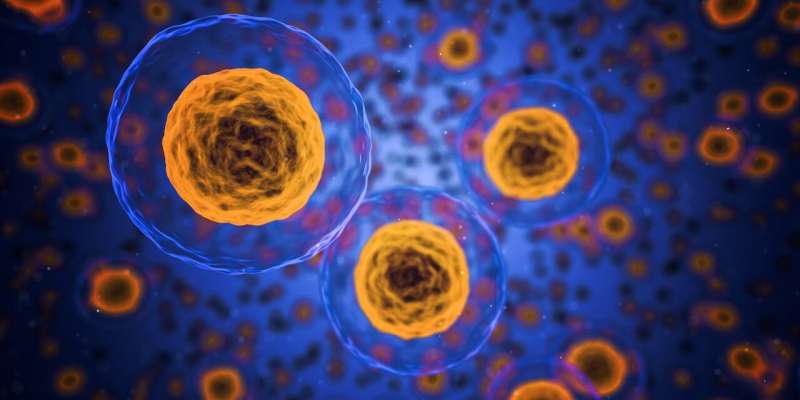
Scientists have developed a new way of counting labeled proteins in living cells that could become a standard and valuable tool in the field of biomedical research.
This powerful new technique, known as Protein-tag Degree of Labeling (ProDOL), provides a robust and versatile approach for precisely determining labeling efficiencies, the number of proteins that are labeled with fluorescent markers in living cells, in microscopy, a crucial aspect of protein quantification in biological research.
The method was developed by a team of researchers from Cardiovascular Sciences and the School of Chemistry at the University of Birmingham, in collaboration with several international institutions. The findings, which highlight the potential of ProDOL to significantly enhance the accuracy and reliability of protein labeling, were published in a recent study appearing in Nature Methods.
Fluorescence microscopy has long been a cornerstone in the field of biomedical research, enabling scientists to detect and analyze proteins within cells. However, the accuracy of these analyses heavily depends on the ability to determine how many proteins are labeled with fluorescent markers, a parameter known as the degree of labeling (DOL). Existing methods for measuring DOL have limitations, often resulting in variable labeling efficiencies and unspecific signals.
“ProDOL is designed to address these challenges by providing a fast and reliable method to quantify labeling efficiencies,” said Professor Dirk-Peter Herten, the lead researcher at Cardiovascular Sciences, University of Birmingham. “This tool allows for the optimization of protein-tag labeling strategies and provides accurate measurements of protein copy numbers in cellular structures.”
“With its proven accuracy and adaptability, ProDOL is set to become a standard and valuable tool in the field of biomedical research, paving the way for more precise and insightful studies of cellular functions. It is also highly versatile, making it applicable to various cell types and experimental conditions.
“In the future, this could, for example, improve our understanding of cellular signaling processes in the activation of immune cells or platelets which are relevant in the context of various diseases, including but not limited to inflammation, immune deficiencies, and various cardiovascular diseases.”
Real-world applications and future directions
In the study, ProDOL was applied to investigate how the HIV-1 virus affects the response of CD4 T immune cells.
In collaboration with Professor Oliver Fackler from the Department of Infectious Diseases, Integrative Virology at Heidelberg University Hospital, this demonstrated ProDOL’s effectiveness in measuring the total and activated copy numbers of by counting both the total and active numbers of helper proteins in tiny signaling clusters of immune cells.
Additionally, Professor Ursula Klingmüller from the Division Systems Biology of Signal Transduction at the German Cancer Research Center (DKFZ) contributed to the design of the probes for live-cell applications, ensuring the technique’s robustness and applicability in dynamic biological systems.
More information:
ProDOL: a general method to determine the degree of labeling for taining optimization and molecular counting, Nature Methods (2024). DOI: 10.1038/s41592-024-02376-6
Citation:
Microscopy technique ‘paves way’ for improving understanding of cellular functions (2024, August 8)
retrieved 8 August 2024
from https://phys.org/news/2024-08-microscopy-technique-paves-cellular-functions.html
This document is subject to copyright. Apart from any fair dealing for the purpose of private study or research, no
part may be reproduced without the written permission. The content is provided for information purposes only.







